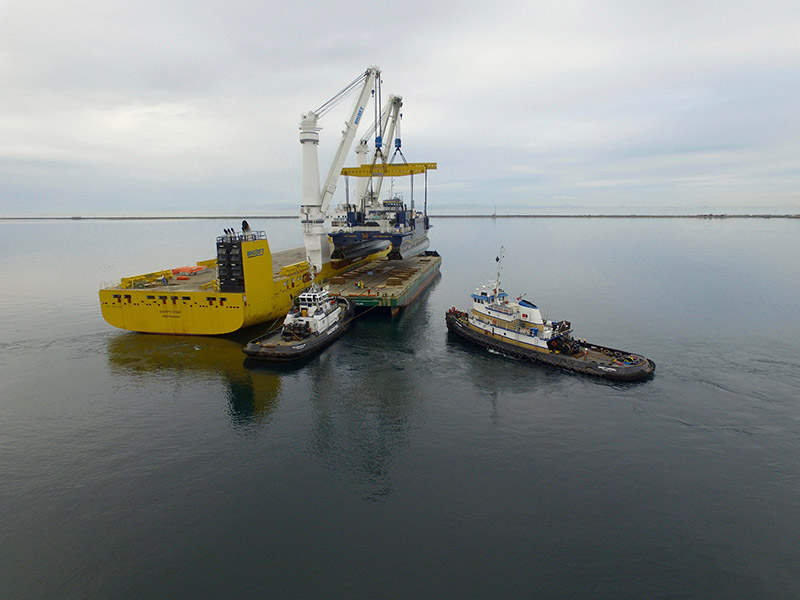After six years of sitting around Southeast Alaska doing nothing but sucking up money and feeding controversy, the Susitna has finally found a new home: the Philippines.
Last year, the Philippine Red Cross paid $1.8 million to the Matanuska-Susitna Borough in Alaska for the experimental, variable-draft catamaran that originally cost an estimated $80 million. Built by Alaska Ship & Drydock (now Vigor Alaska) in Ketchikan, the Susitna was originally conceived as a military landing craft, then as a ferry in Alaska, but it never operated as either.
Before being towed across the North Pacific on a barge, the 195-footer was towed from Ketchikan to Seattle. In Seattle, the vessel went into Foss Shipyard for extensive engine repairs and modifications necessary for the ocean tow, which was contracted out to Harley Marine Services in Seattle.
“She wasn’t built for anything more than sea state 4,” said Matt Godden, Harley’s senior vice president and COO. “We weren’t willing to risk that, so we opted to pick her up, which was quite a feat in its own right.”
Given the Susitna’s total weight of 960 tons (the hull was heavily reinforced for ice operations), the lift would either require up to four smaller cranes or one large one. “We ended up using a heavy-lift ship to pick her up, the Happy Star.”
And in a happy coincidence, the Happy Star was also available to reverse the process in the Philippines after the Susitna arrived on the barge Chatham Provider, which had been towed across by Harley Marine’s Ernest Campbell, a 3,000-hp, 107'x32' twin-screw tug built in Louisiana in 1969.
“The boat was perfect for the job,” said Godden. “The barge was rated at 8,000 tons, and this was an eighth to a fourth of that, so a 3,000-horsepower, twin-screw tug that has been maintained to oil-major standards was just right. She’s a great sea boat and has made many trips between the West Coast and Honolulu, as well as to and from Alaska.”
The tug and its seven-man crew stopped briefly in Honolulu east and west bound along with port calls in Guam.
The tug, barge and crew returned to Seattle on Jan. 30, 120 days and 15,269 nautical miles after departing in early October. “Some of the guys crewed up in anticipation of this job in early August, so they missed the full holiday season, from Halloween to New Year’s, but they all were committed to this project, which was one of the more complex jobs we had last year,” said Godden.

The Susitna under tow by the Harley Marine tug Ernest Campbell en route to the Philippines. Harley Marine Services photo by Bart Pinder.




